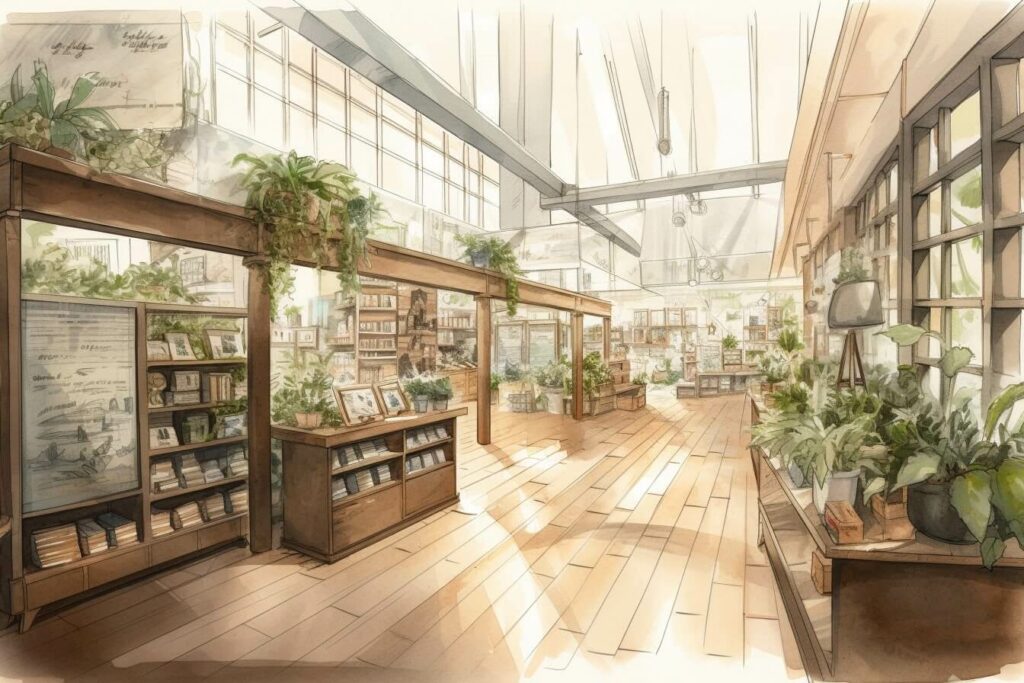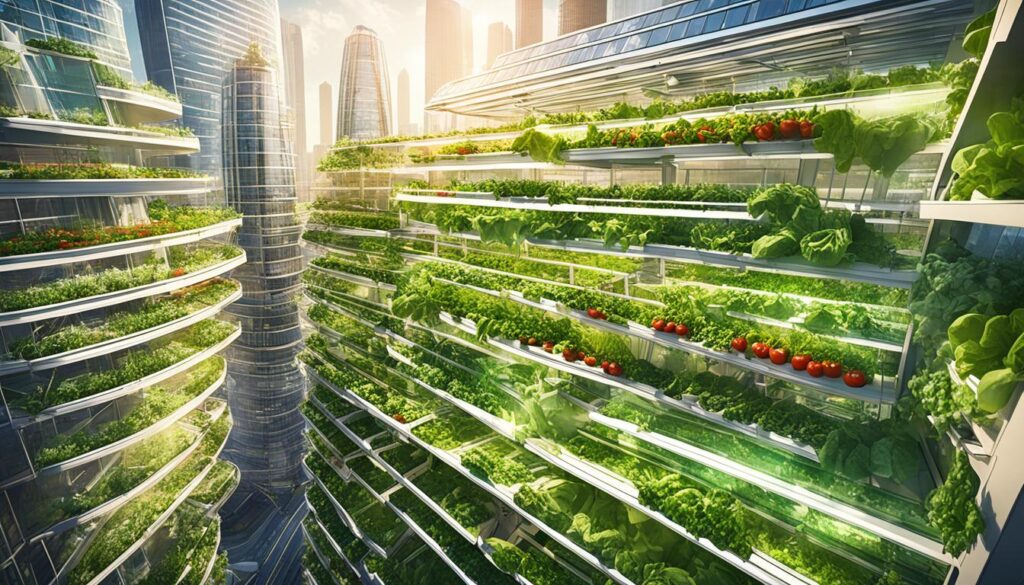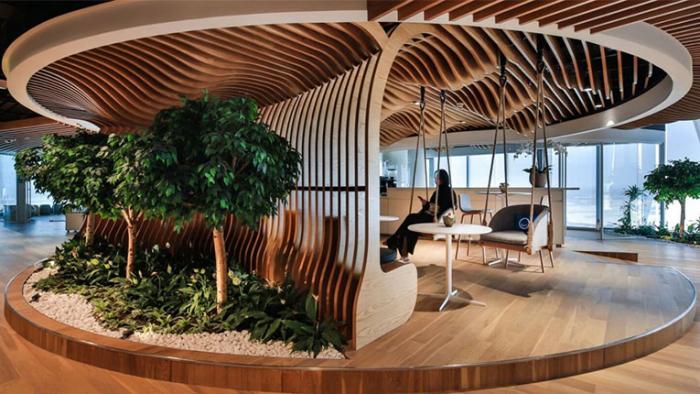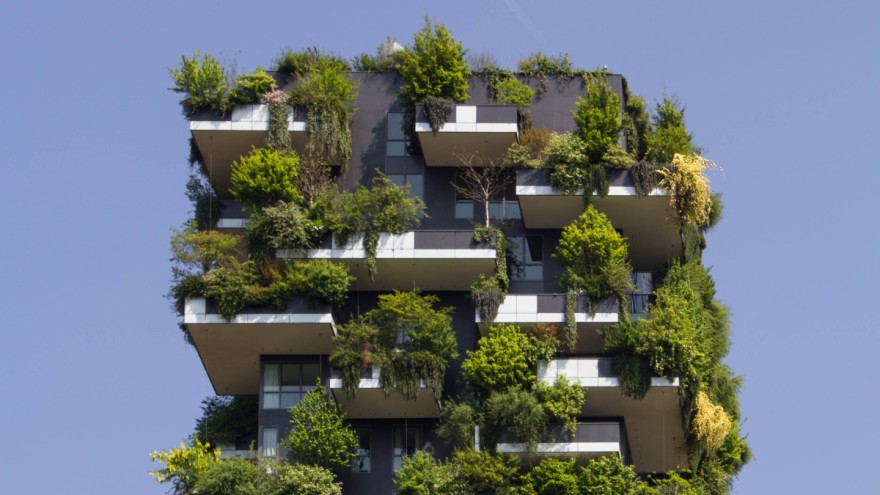Case Study: Biophilic Elements in a Commercial Building.
Biophilic design is an approach that integrates natural elements into the built environment, promoting a deeper connection between individuals and nature, and exemplifies nature-inspired architecture and green architecture.
This article examines the significance of biophilic design, particularly within commercial settings, and highlights a case study that illustrates how these elements enhance well-being, productivity, and overall quality of life for occupants.
Furthermore, the discussion will address the challenges associated with implementation and provide insights into future possibilities for this design philosophy.
The objective is to elucidate the impact of incorporating nature into indoor environments, highlighting the ecological benefits and contributing to improved occupational health and overall human well-being.
What is Biophilic Design?
.jpg_00.jpeg)
Biophilic design represents a progressive approach within architecture that aims to establish a connection between individuals and nature by integrating natural elements into built environments. This design philosophy not only enhances visual appeal but also promotes sustainability and occupant well-being.
By incorporating features such as indoor plants, daylighting, natural materials, and earth tones into commercial buildings, biophilic design transforms spaces into restorative environments that prioritize health, wellness, and emotional well-being.
By emphasizing principles like organic shapes, water features, and abundant greenery, biophilic design fosters an environment that enhances mental clarity and mitigates stress. Research suggests that workplaces designed with these elements can significantly improve productivity and elevate the overall mood of occupants.
For instance, the inclusion of living walls or green roofs not only beautifies office spaces but also contributes to enhanced air quality, ultimately making employees feel more energized and focused.
Furthermore, maximizing natural light through large windows can positively influence circadian rhythms, resulting in improved sleep quality, increased job satisfaction, and enhanced visual comfort.
In summary, the adoption of biophilic design principles has the potential to transform how individuals engage with their environments, thereby paving the way for healthier, more engaged communities.
Why is Biophilic Design Important?
The significance of biophilic design is rooted in its diverse benefits that encompass sustainability, health, and user experience, rendering it a critical consideration in contemporary architecture. By incorporating elements that foster exposure to nature and improve indoor air quality, biophilic design not only promotes the well-being of occupants but also positively impacts the overall environmental footprint of commercial buildings. This aligns with corporate responsibility and regulatory compliance mandates.
This approach has a substantial effect on organizational productivity, as research demonstrates that workspaces enriched with natural elements can enhance employee satisfaction and mitigate stress levels. Notably, a study conducted by the University of Exeter revealed that workplaces that employ biophilic principles experience a notable 15% increase in employee productivity.
Additionally, the use of natural materials and energy-efficient design can lead to reduced energy consumption by improving thermal performance, thereby aiding in the achievement of sustainability objectives and promoting sustainable design.
As the emphasis on wellness in the workplace continues to grow, it becomes increasingly clear that prioritizing these design principles is not merely a passing trend but rather a necessity for cultivating healthier and more efficient built environments.
Case Study: Biophilic Elements in a Commercial Building
This case study examines the implementation of biophilic elements within a commercial building, showcasing strategic design and architecture that foster energizing environments, improve environmental psychology, and enhance the well-being and productivity of occupants.
By analyzing specific design strategies, including the incorporation of living walls, water features, natural lighting, and biophilic patterns, this study seeks to evaluate the practical application of biophilic design principles and their measurable effects on building performance, occupant satisfaction, and stakeholder engagement.
Location and Overview of the Commercial Building
The selected commercial building is strategically situated within an urban development area, designed to reflect the surrounding landscape while actively engaging the community through its architectural and green infrastructure. This prime location not only enhances accessibility but also promotes interaction with nature, establishing a benchmark for progressive workplace design that incorporates biophilic elements at its core.
The building’s sleek façade, characterized by extensive glass panels and sustainable materials, harmonizes with the dynamic urban environment while allowing an abundance of natural light to illuminate interior spaces. This architectural openness facilitates a seamless transition between indoor and outdoor environments for residents and workers alike.
Additionally, the thoughtfully landscaped gardens and inviting communal spaces foster an atmosphere conducive to collaboration and creativity, encouraging users to connect not only with the space but also with one another.
The integration of local art and community gathering areas further highlights the building’s significance, ensuring that the design resonates with the cultural identity of the neighborhood and promotes active community engagement.
Biophilic Elements Incorporated in the Building
This commercial building integrates a variety of biophilic elements, including indoor plants, natural materials, and water features, all meticulously designed to enhance the occupants’ connection to nature.
These components not only enhance the building’s aesthetic appeal but also play a crucial role in improving air quality, daylighting, thermal comfort, and social interaction, thereby creating a healthier and more productive work environment.
The incorporation of lush indoor plants adds a vibrant dimension while serving as a natural air filter, effectively reducing toxins, enhancing biodiversity, and promoting a sense of well-being among employees. Natural materials such as wood and stone are extensively utilized throughout the design, cultivating a warm and inviting atmosphere that aligns with the principles of the natural world.
Furthermore, strategically positioned water features contribute soothing sounds, create tranquil spaces, and assist in humidity regulation, thereby enhancing overall comfort.
These thoughtful design choices support mental health, foster creativity, encourage adaptive reuse, and promote collaboration, transforming the workspace into not merely a venue for productivity but also a nurturing environment that addresses the holistic needs of its users and supports human-centered design.
Benefits of Biophilic Design in the Building
The incorporation of biophilic design in commercial buildings provides substantial benefits, including enhancements to health and well-being, increased productivity, and a reduction in the ecological footprint of the structure. By establishing a strong connection to nature, these design strategies not only improve occupant satisfaction but also illustrate the economic advantages of sustainable practices within the architecture and construction industries.
Research indicates that natural light, greenery, and organic materials are instrumental in lowering stress levels and elevating mood among employees. Data collected from user surveys reveal significant increases in job satisfaction and creativity, with many respondents noting enhanced focus and engagement in their work tasks.
The environmental impact of such designs is considerable; energy-efficient solutions integrated into the biophilic framework lead to reduced operational costs and resource conservation. This case study demonstrates how biophilic design acts as a catalyst for positive change, promoting individual well-being while fostering long-term sustainability in urban environments.
Impact of Biophilic Design and Nature Integration on Occupants
.jpg_01.jpeg)
The impact of biophilic design on occupants is substantial, as it significantly enhances their well-being and promotes a deeper connection to nature through immersive sensory experiences.
Research demonstrates that environments incorporating biophilic elements can lead to improved mental health outcomes, heightened productivity, enhanced sensory experiences, and an enriched sense of community within workplace settings.
Improved Well-being and Productivity
The implementation of biophilic design in commercial buildings yields significant improvements in occupant well-being and productivity. Research indicates that individuals in nature-inspired environments experience reduced stress levels and enhanced concentration.
By integrating elements such as natural lighting, indoor plants, natural textures, and biophilic patterns, workplace design can cultivate an invigorating atmosphere that promotes creativity and collaboration.
Studies demonstrate that incorporating features like living walls, water elements, and views of nature can enhance cognitive function by as much as 15%. Furthermore, employees working in environments enriched with these natural elements report a 20% increase in job satisfaction.
Additionally, research indicates that employees with access to natural light exhibit productivity rates that are 51% higher, report 33% greater satisfaction with their workplaces, and benefit from improved environmental sustainability.
To leverage these benefits, employers should consider strategically positioning workspaces near windows, employing open layouts that maximize natural light, and incorporating greenery throughout the office. Such measures can ultimately foster an environment that supports both personal well-being, enhances social sustainability, and ensures high performance.
Reduced Stress and Anxiety through Nature Integration
Biophilic design, as a key approach in sustainable design, plays a significant role in reducing stress and anxiety levels among occupants by fostering restorative environments that facilitate exposure to nature and promote emotional well-being. This design principle is particularly pertinent in the context of our fast-paced urban lifestyles, where elements of nature integration can act as a counterbalance to daily stressors.
Environments designed with biophilic principles typically incorporate features such as natural light, vegetation, and water elements. Research in environmental psychology has demonstrated that these components can enhance mood, human well-being, and cognitive function. For example, studies indicate that individuals working in environments rich in greenery report lower levels of fatigue and increased creativity and productivity.
Practical applications of this design philosophy, which aligns with green architecture, include the incorporation of living walls, maximizing natural daylighting through expansive windows, and creating serene outdoor areas such as gardens or patios that encourage relaxation.
These features not only promote a sense of connection with nature but also significantly enhance the psychological well-being of individuals. This supports the notion that integrating natural elements into built environments facilitates biophilia and can effectively mitigate the pressures associated with contemporary living.
Enhanced Cognitive Function and Human Well-being
Enhanced cognitive function and human well-being are significant advantages of biophilic design. Environments that incorporate natural elements have been demonstrated to improve focus, creativity, and problem-solving capabilities among occupants. By fostering a deeper connection to the natural environment, individuals are better equipped to engage in tasks that necessitate higher levels of cognitive processing.
Research studies, such as those conducted by Kaplan and Kaplan, indicate that the presence of nature not only mitigates stress but also enhances attention span and concentration. Key components, including natural light, vegetation, water features, and organic materials, contribute to indoor plants’ benefits and can considerably impact individual performance within various environments.
For example, workplaces that integrate greenery and provide views of the outdoors report heightened productivity levels and increased employee satisfaction. Additionally, the use of colors inspired by nature, such as earthy tones, can cultivate a calming atmosphere that promotes mental clarity, thereby unlocking the cognitive potential of those who occupy these thoughtfully designed spaces with enhanced occupational health.
Increased Connection to Nature
Increased connection to nature is a fundamental objective of biophilic design, as it encourages occupants to engage with their environment and participate in community activities that promote well-being and sustainability. By integrating urban greenery and natural motifs into urban spaces and public areas, architects can enhance the occupant experience, fostering a sense of belonging and community engagement.
These design practices are essential in urban environments, where concrete often predominates the landscape. Incorporating features such as green roofs, vertical gardens, and parklets transforms ordinary spaces into vibrant areas that encourage interaction, social sustainability, and relaxation.
For example, the High Line in New York City has effectively repurposed rail tracks to create a lush elevated park that serves as both a refuge for nature enthusiasts and a social hub for residents and tourists. Similarly, community gardens have emerged in various urban neighborhoods, providing spaces where individuals can cultivate plants, foster relationships, and reconnect with the earth.
Such initiatives not only enhance aesthetic appeal but also significantly contribute to mental well-being and community cohesion.
Challenges and Considerations in Implementing Biophilic Design
Implementing biophilic design entails several challenges and considerations, including financial implications, maintenance requirements, and the necessity for climate-responsive design.
As architects and developers work to integrate natural elements into the built environment, they must navigate zoning regulations and evaluate the cost-effectiveness of biophilic components, including nature-inspired architecture, to ensure the long-term sustainability and functionality of the spaces created.
Cost and Maintenance
.jpg_10.jpeg)
Cost and maintenance represent critical factors to consider when implementing biophilic design, as the integration of natural elements may necessitate additional upfront investment and ongoing maintenance considerations. The economic advantages associated with heightened occupant satisfaction and increased productivity often outweigh these initial costs, thereby making a strong case for sustainability in commercial building projects.
In the short term, the installation of features such as living walls, natural light sources, and water elements may require a substantial financial investment. However, over time, these investments have the potential to result in significant reductions in operational costs due to decreased energy consumption and lower employee turnover, contributing to improved energy efficiency.
The significance of utilizing sustainable materials cannot be overstated; by selecting eco-friendly options that require minimal maintenance and possess a longer lifespan, organizations can effectively manage their budgets while meeting the growing consumer demand for environmentally responsible practices.
Ultimately, a deliberate approach to biophilic design enhances the aesthetic appeal of spaces and cultivates a more productive and satisfied workforce.
Integration with Existing Structures: Adaptive Reuse and Design Innovation
Integrating biophilic design with existing structures presents unique challenges, particularly concerning adaptive reuse and design flexibility. To effectively incorporate natural elements into older buildings, architects must strike a balance between preservation and innovation, making informed decisions that enhance occupant experience while maintaining structural integrity, which is crucial in architectural vision.
This endeavor often requires navigating the inherent constraints of historical design, such as limited spatial configurations and outdated building materials. However, numerous case studies demonstrate that successful adaptations can revitalize underutilized spaces while fostering a connection to nature.
For example, the transformation of an old warehouse into a vibrant community hub illustrates the significant role of greenery and natural light in promoting well-being. By thoughtfully merging original architectural features with contemporary biophilic elements, designers can unlock potential that benefits both the building and its occupants, enhancing user experience and community benefits.
This interplay between the old and the new exemplifies the innovative solutions that emerge from embracing design challenges, ultimately resulting in more sustainable and enriching environments.
Adaptation to Local Climate and Environment
Adapting biophilic design principles to the local climate and environment is essential for its effectiveness, as varying regions present distinct challenges and opportunities for integrating nature. By implementing climate-responsive design strategies that align with climate conditions, architects can significantly enhance building performance while optimizing the advantages of biophilic elements.
For example, in hot and arid regions, the incorporation of shaded outdoor spaces and reflective materials can effectively reduce heat retention, while the integration of water features may facilitate cooling of the surrounding air. Conversely, areas characterized by heavy rainfall benefit from the implementation of green roofs and rain gardens, which manage stormwater while creating a verdant environment, thus contributing to environmental sustainability.
The use of local building materials, such as bamboo or rammed earth, not only promotes sustainability but also ensures that the structure harmonizes with its surroundings. These climate-responsive techniques contribute to energy efficiency and foster a deeper connection between inhabitants and their environment.
Summary of Findings
The findings from this exploration of biophilic design indicate its significant impact on occupant well-being, productivity, and environmental sustainability. By effectively integrating natural elements into commercial buildings, such practices not only enhance natural aesthetics but also contribute to improved health outcomes and economic benefits.
The incorporation of features such as natural light, greenery, and water elements fosters a connection to nature, which has been demonstrated to reduce stress, improve air quality, and enhance cognitive function.
While the benefits of biophilic design are numerous, including reduced energy costs and increased tenant satisfaction, there are challenges to consider, such as the initial investment, maintenance considerations, and the necessity for skilled design professionals.
Addressing these challenges can lead to more resilient urban environments that prioritize human health and ecological harmony, ultimately facilitating the advancement of sustainable architectural practices that emphasize harmony with nature.
Future Implications and Recommendations: Embracing Nature as Teacher
The future implications of biophilic design are highly promising, as it is increasingly recognized as a critical approach in the creation of sustainable and human-centered design environments. Stakeholders are encouraged to prioritize biophilic elements in architectural planning and actively engage the community to enhance the relevance and efficacy of urban development initiatives.
This approach not only addresses pressing environmental challenges but also promotes mental well-being and encourages social interaction by fostering a reconnection between individuals and nature. Practitioners should advocate for the integration of natural elements, such as green walls, indoor gardens, and natural lighting, into their designs.
Policymakers have a pivotal role in establishing supportive regulations that encourage the adoption of biophilic practices in new developments. Continued research into the benefits of biophilic design, such as nature integration and green architecture, will be essential, as it can provide evidence-based insights that strengthen its implementation and promote sustainable design.
By involving communities in the design process, architects and planners can ensure that these spaces authentically reflect the needs and values of the individuals who will inhabit them. This approach also enhances community engagement and supports human well-being through nature-inspired architecture and restorative environments.
Frequently Asked Questions
What is a biophilic element?
.jpg_11.jpeg)
A biophilic element is any design feature or element that incorporates natural elements and materials, such as earth tones and natural textures, into a built environment, promoting a connection with nature and enhancing visual stimulation and sensory experiences.
Why is incorporating biophilic elements important in a commercial building?
Incorporating biophilic elements in a commercial building has been shown to improve overall well-being, productivity, and creativity among building occupants. It also enhances air quality and environmental psychology, providing environmental benefits such as reducing energy consumption and promoting sustainability through effective sustainability strategies.
What are some examples of biophilic elements in a commercial building?
Examples of biophilic elements in a commercial building include indoor plants, natural lighting, water features, natural materials like wood and stone, and outdoor views and access, promoting a visual connection and indoor-outdoor flow that enhances user experience and design innovation.
Can biophilic elements be incorporated into existing commercial buildings?
Yes, biophilic elements can be incorporated into existing commercial buildings through renovations or adaptive reuse. This can include adding indoor plants, natural lighting features, or creating outdoor green spaces that support biodiversity enhancement and ecological benefits.
Are there any cost implications to incorporating biophilic elements in a commercial building?
While there may be some initial costs associated with incorporating biophilic elements, such as purchasing plants or installing natural lighting, the long-term benefits can outweigh these costs in terms of increased productivity, occupational health, and reduced energy usage, contributing to improved economic considerations and project outcomes.
What are some potential challenges to incorporating biophilic elements in a commercial building?
Some potential challenges to incorporating biophilic elements in a commercial building may include limited space, budget constraints, or the need for specialized expertise in landscape architecture and design principles. However, these challenges can be overcome with careful planning, stakeholder engagement, and creative solutions that consider maintenance considerations and risk assessment.

I’m Bruno, an architect with a deep passion for Biophilic Design in Urban Architecture. Throughout my career, I’ve focused on integrating natural elements into urban planning, and I created this site to share my insights and foster a deeper understanding of how biophilic principles can significantly enhance urban living. Dedicated to sustainable development, I continually explore innovative design solutions that promote both environmental and human well-being in city landscapes.














Publicar comentário